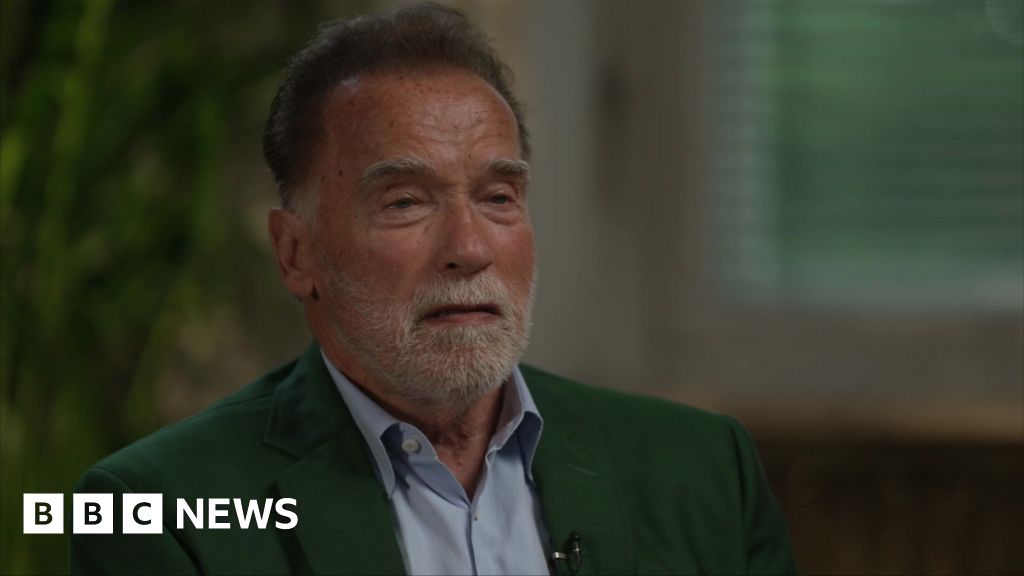ARTICLE AD BOX
image source, Getty Images
image captionThe Greens and FDP did best among young votersWe know the banner headline from the German election - the centre-left Social Democrats (SPD) will be the biggest party, closely followed by the centre-right Christian Democrats (CDU/CSU). The Greens and the libertarian FDP both increased their share, while the far right and far left fell back.
But beyond that, there are a number of smaller stories. Here are some of the side angles we've noticed.
1. The generational split
The traditional parties of the centre left and centre right came out ahead overall, but if you look at the age data, an interesting trend emerges.
Voters under 30 preferred the Greens on the left (22%) and the libertarian FDP (20%) on the right by a wide margin, according to this exit poll from Forschungsgruppe Wahlen.
In contrast, the over-60s voted for the centre left (35%) and centre right (34%). Only 9% went for the Greens and 8% for the FDP.
But because most of the electorate is older, the big-tent parties of the left and right came out ahead.
2. Tinker Tailor Soldier... cry?
A former intelligence chief turned right-wing controversialist has failed in his bid to get into parliament. Hans-Georg Maassen stood as a candidate for the Christian Democrats, but on the extreme right of the party.
Until 2018 he ran the domestic intelligence agency, but was forced to resign when he cast doubt over the existence of far-right violence in the city of Chemnitz.
In this election he was a candidate in Thuringia, one of the states in eastern Germany where the far-right Alternativ für Deutschland (AfD) is particularly strong.
Mr Maassen was arguing for the Christian Democrats to move further right, away from the centrist policies of outgoing Chancellor Angela Merkel - especially on migration.
But voters were unconvinced, putting him third in his constituency behind the Social Democrats and the AfD.
3. The Schleswig-Holstein question
Students of 19th Century history may recall - dimly - the Schleswig-Holstein question*. It became a byword for a fiendishly complicated diplomatic dilemma.
Now Schleswig, at least, is back in play in the German election. The party representing the Danish and Friesian minority in Germany has made it into parliament for the first time in about 70 years.
The SSW (its German name means the Voters' Union of South Schleswig) will hold a single seat. It gained 0.1% of the overall vote, but is exempt from the normal 5% threshold for representation in the Bundestag because it represents a national minority.
* Lord Palmerston famously said, "Only three people understood it: the prince consort, who is dead; a German professor, who has gone mad; and I, who have forgotten all about it."
Which is how you may feel after reading about the number of possible coalitions that could govern Germany.
5. Plagiarism and politics
Accusations of plagiarism tarnished the chances of the Greens' candidate for chancellor, Annalena Baerbock. But another female politician who also faced plagiarism charges pulled off a surprise victory.
Franziska Giffey, of the centre-left Social Democrats, actually had her PhD withdrawn because she was found to have plagiarised part of her doctoral thesis.
Nonetheless, she's now the newly elected mayor of Berlin - the first woman to govern the German capital. Her party defeated the Greens, led by Bettina Jarasch, by 21.4% to 18.9%.
4. Expropriation conundrum
As well as the federal election, there was also a referendum in Berlin on expropriations to create more social housing.
About 56% voted in favour of taking the properties of major landlords (more than 3,000 housing units) into public ownership, while 39% were opposed.
Rising rents have been a flashpoint in Berlin: one online property portal calculated that rents had gone up by 42% in the five years to 2020.
Mayor-elect Franziska Giffey has said she's opposed to expropriations but the referendum result should be respected.
6. Will there be enough seats - literally - in the Bundestag?
At 735 seats, this German parliament looks set to be the biggest ever. But because of the German electoral system, no one - not even the election authorities - knew just how big it would be.
The top candidate in each constituency gets a seat: there are 299 of them. A further 299 seats are reserved for the party lists in the 16 federal states, or Bundesländer. Voters rank the candidates in order of preference.
But that's only 598, so where do the extra 137 seats come from?
This is where second-preference votes come into play, based on the population in each states and how many votes go to the second-placed party in each.
Confused yet? You should be.
Parties need to clear the 5% minimum vote share, or win three constituency seats, in order to enter parliament.
This is how the far-left party, Die Linke, only narrowly scraped in. Its share of the vote fell by almost half from the last elections, in 2017, from 9.2% to 4.9%.
However, the three constituencies it won, in Berlin and Leipzig, saved it from political oblivion at federal level.
7. Red tide in the east and Laschet loses at home
As a sign of just how well the Social Democrats have done, they've even taken Angela Merkel's old constituency. She held the seat in Mecklenburg-West Pomerania from 1990, the first federal election after German reunification.
And there was a symbolic defeat for her successor as the centre-right candidate for chancellor, Armin Laschet. After a gaffe-strewn election campaign, he failed to win a seat in his home state of North Rhine Westphalia.
That doesn't mean he's out of parliament - he'll enter the Bundestag on a list seat - but it does show the depths of voters' doubts about him.
8. Why was the election held on the same day as the Berlin Marathon?
The same thing happened in 2017.
Sorry, we can't answer that one. Answers on a Postkarte, bitte.

 3 years ago
61
3 years ago
61








 English (US) ·
English (US) ·